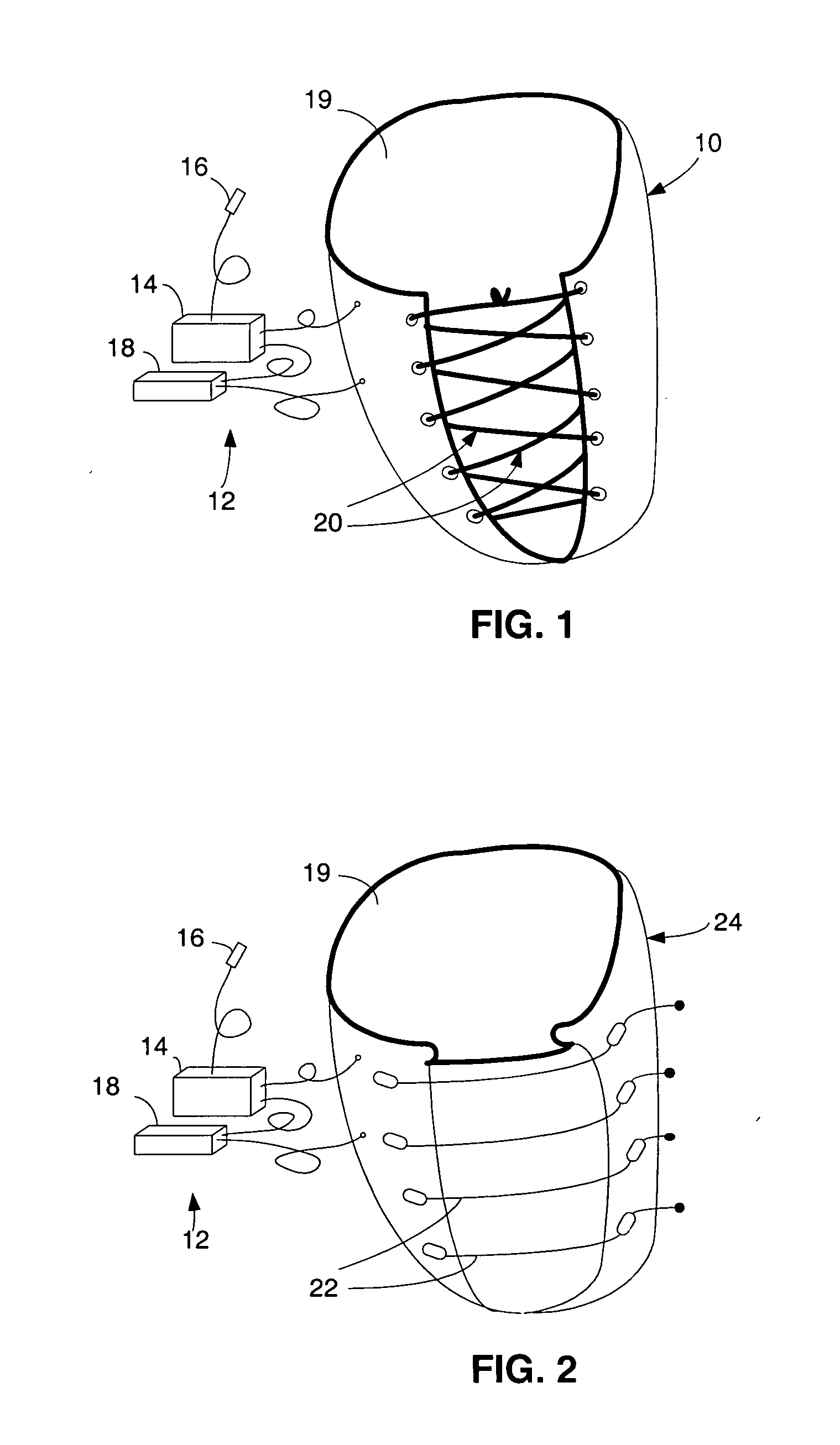Muscle function augmentation
a muscle function and augmentation technology, applied in the field of medical devices, can solve the problems of insufficient supply of donor hearts, complex surgical implantation, and prone to clot formation of plunger-type devices, and achieve the effect of enhancing the pumping function of hearts
- Summary
- Abstract
- Description
- Claims
- Application Information
AI Technical Summary
Benefits of technology
Problems solved by technology
Method used
Image
Examples
Embodiment Construction
[0033] As illustrated in FIG. 1, in an exemplary embodiment of the invention, a system for compressing a bodily organ includes a carrier 10 and a sensor system 12. Although in the illustrated embodiment sensor system 12 is external to carrier 10 and includes a control system 14 with an electrode 16 and a battery or other power supply 18, in other embodiments portions of it can be within carrier 10 or arranged in any other suitable manner with respect to carrier 10. In this embodiment, carrier 10 has a pouch-like, sack-like or bag-like shape with an opening 19 fittable over a portion of an organ. Carrier 10 further has laces 20 for tightening it around the organ. Nevertheless, in other embodiments, any other suitable means for fastening it around the organ or to the organ can be included, such as the drawstring or zip-tie fasteners 22 shown on a carrier 24 in FIG. 2.
[0034] As illustrated in FIG. 3, carrier 10 is applied to a heart. It can be fitted so that it partially envelopes the...
PUM
 Login to View More
Login to View More Abstract
Description
Claims
Application Information
 Login to View More
Login to View More - R&D
- Intellectual Property
- Life Sciences
- Materials
- Tech Scout
- Unparalleled Data Quality
- Higher Quality Content
- 60% Fewer Hallucinations
Browse by: Latest US Patents, China's latest patents, Technical Efficacy Thesaurus, Application Domain, Technology Topic, Popular Technical Reports.
© 2025 PatSnap. All rights reserved.Legal|Privacy policy|Modern Slavery Act Transparency Statement|Sitemap|About US| Contact US: help@patsnap.com



